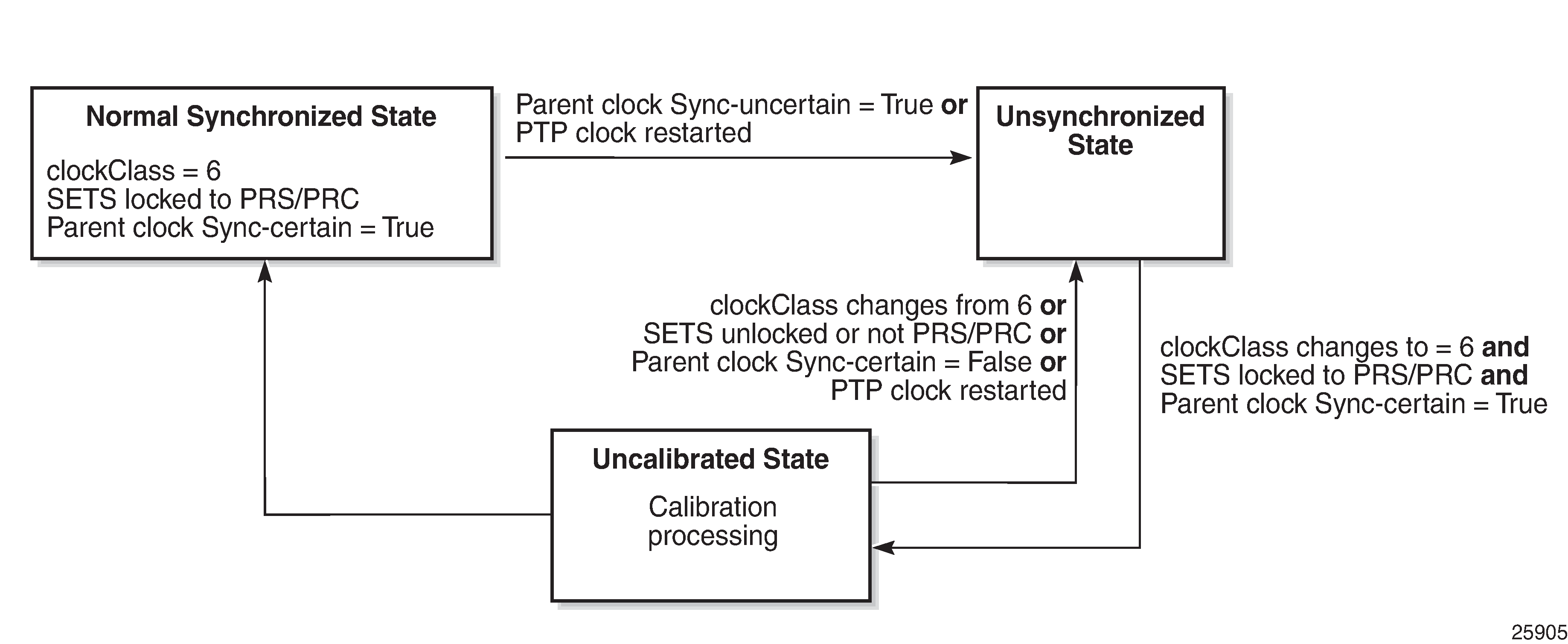As described in IEEE 1588v2 PTP, master clocks transmit Announce messages containing the clock priority and quality. Each clock in the network can use the BMCA and the clock properties received from the Announce messages to select the best clock to synchronize to.
Within a PTP-aware network, there could be situations where boundary clocks advertise clockClass 6 in the Announce message, which indicates that the parent clock is connected to a traceable primary reference source/clock (PRS/PRC) in locked mode (for example, locked to GNSS), and is therefore designated as the synchronization time source. However, the PTP network may still be in a transient state and stabilizing.
For example, this may occur when:
a grand master clock locks and relocks to GNSS
an intermediate boundary clock is started or restarted
a new parent clock is chosen
Depending on the application, it may be important for a downstream boundary clock or slave clock to know whether the PTP network has stabilized or is still ‟synchronization uncertain”.
Specifically when the G.8275.1profile (with IP encapsulation) or the G.8275.2 profile is used, the synchronizationUncertain flag is added to the Announce message. The use of this flag is optional. The 7705 SAR PTP grand master, boundary, and slave clocks support the processing of the synchronization state as follows.
If a grand master clock has its synchronous equipment timing source (SETS) frequency clock and time clock locked to GNSS and its clockClass equals 6, it is in a ‟synchronization certain” state. The synchronizationUncertain flag in the Announce message is set to FALSE.
If a grand master clock does not meet the above criteria, it is in a ‟synchronization uncertain” state. The synchronizationUncertain flag in the Announce message is set to TRUE.
In order for a boundary clock to be in the ‟synchronization certain” state, its parent clock’s clockClass must be ‟synchronization certain”, its SETS must be locked and PRS/PRC traceable, and PTP must have sufficient time to stabilize to the parent clock. At that point, its PTP port state transitions from an Uncalibrated state to a Slave state.
The transition period is 16 s for G.8275.1 and 256 s for G.8275.2. To be selected as a system time reference, a G.8275.1 or G.8275.2 clock must be in the ‟synchronization certain” state.
A boundary clock can fall back to the ‟synchronization uncertain” state if its parent clock changes to the ‟synchronization uncertain” state, its SETS becomes unlocked or not PRS/PRC traceable, or the local clock is restarted or reset. The PTP port state transitions away from the Slave state.
This behavior is shown in Figure: Synchronization Certain/Uncertain States.

Because the synchronizationUncertain flag is newly agreed upon in standards, most base station slave clocks do not look at this bit. Therefore, in order to ensure that the downstream clocks are aware of the state of the network, the PTP clock (grand master, boundary, slave) may optionally be configured to transmit Announce and Sync messages only if the clock is in a ‟synchronization certain” state. This is done using the no tx-while-sync-uncertain command.